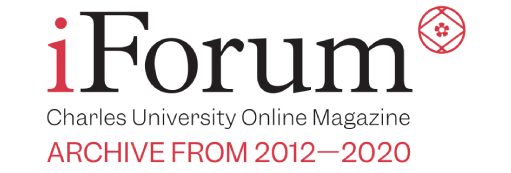Queralt Morros Baro - International iForum • foto: Jaromír Krejčí, Faculty of Arts • 2 April 2014
Stereotypes, Reality and Living Tradition of the Native American Dance
“Playing cowboys and Indians may have been one of our childhood games”, said Professor György Tóth, and that’s absolutely true. What we have to ask ourselves is what we know about the Native American traditions and which part of this personal knowledge is based on veritable facts. The lecture on Tuesday, 11th of March in the Faculty of Social Sciences, analysed the historical point of view of all the false stereotypes that society has about the Native American rituals, based on the wrong impressions that we have learned from western movies, popular culture stories or partial visions of historical periods.
The lecture analysed the historical point of view of all the false stereotypes that society has about the Native American rituals, based on the wrong impressions that we have learned from western movies, popular culture stories or partial visions of historical periods.
The professors of the Department of American Studies, Andrew Giarelli and György Tóth, conveyed their passion in an open public lecture where they opened the eyes of students to the real answer of the question: “Why Do Indians Dance?”
After centuries of misunderstanding, the Native American culture started to re-emerge again by the 1960s, “when the Civil Rights movements were changing the way Americans thought about race and ethnicity”. The dance was a good way to represent the lost culture, so Native Americans could return to their past traditions, and also share and bring to the world the opportunity to watch. This way people can understand the aim of their rituals in the pow-wow circuits, and dance competitions that are still alive today.
The American Indian pow-wow consists as a well-known event, structured and with specific protocol. The dancers can participate in different traditional styles while the judges evaluate not only the dance, but also the singers, drum groups and traditional dresses.
As the professors Giarelli and Tóth explained, there is not only one answer for the main question of the lecture, “like the origins of the pow-wow, the meanings of dancing are many-layered; we need to be aware of how these meanings are all intertwined. Only this way can we truly appreciate the American Indian dancing”.
|
Queralt Morros Baro is for a semester at the Faculty of Social Sciences in Charles University, Prague. Born near Barcelona, she is in her last year studying for a BA in Journalism at the Universitat Aut?noma de Barcelona. Interested in literature, culture and society, iForum is for her the perfect way to practice journalism skills in a foreigner country and learning about the experience of working abroad. |
|
|
proof-reading: Keziah Garratt-Smithson is a second year student currently on an ERASMUS placement at Charles University in Prague. At home Keziah attends Aberystwyth University, where she studies medieval and early modern history. In her spare time she is a keen reader, loves films, and enjoys horse riding. She chose to write for the iForum because it was a great way to meet like minded individuals, whilst having fun and gaining useful work experience. |
